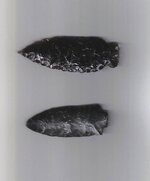smurf-42
Sr. Member
Please don't laugh at this question, I am new to metal detecting and searching for treasures. I plan on detecting an area where Indians were known to travel and started doing research on the area.
Besides digging and getting lucky to find an arrowhead, does a MD help locate them too?
Told you I am new, lol, but having fun learning.
Sue
Besides digging and getting lucky to find an arrowhead, does a MD help locate them too?
Told you I am new, lol, but having fun learning.
Sue







